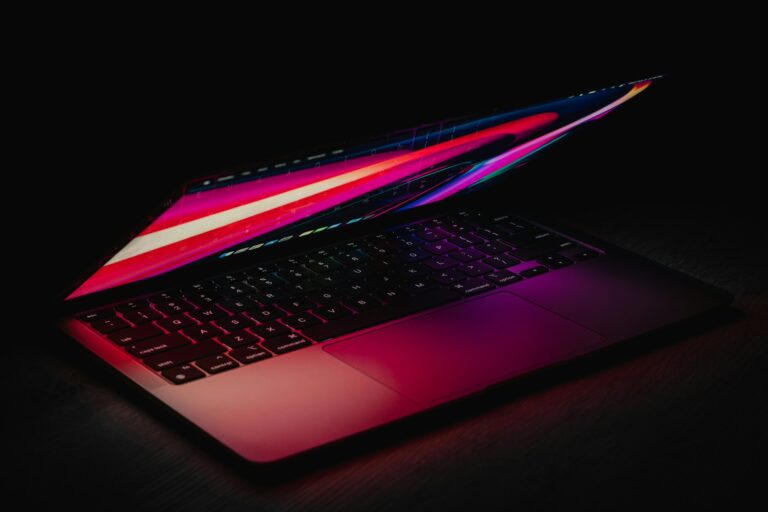In today’s fast-paced world, choosing the right laptop can feel like picking a favorite child—impossible! With a sea of options out there, it’s easy to get lost in the specs and shiny features. But fear not! Whether you’re a student, a gamer, or someone who just wants to stream cat videos in peace, knowing what to consider when buying a laptop can save you from buyer’s remorse and a serious case of tech envy.
What To Consider When Buying A Laptop
Assessing key features ensures the right laptop choice aligns with specific needs. Focus on these crucial aspects when evaluating options.
Processor Performance
Processor speed affects overall laptop functionality. Choose a model with a modern multi-core processor for optimal performance during multitasking. Intel’s Core i5 or i7 and AMD’s Ryzen 5 or 7 deliver excellent results. Ensure the processor meets the demands of intended applications, especially for gaming or heavy software usage.
RAM and Storage Capacity
RAM capacity impacts how smoothly a laptop runs applications. Select at least 8 GB of RAM for everyday tasks, while 16 GB or more is advisable for gaming or professional software. Storage options also vary. Solid State Drives (SSDs) provide faster load times compared to Hard Disk Drives (HDDs). A combination of SSD for the operating system and HDD for additional storage presents a balanced solution.
Display Quality
Display quality significantly influences user experience. Opt for a Full HD (1920×1080) resolution or higher to enhance clarity. Consider IPS panels over TN panels for better color accuracy and wider viewing angles. Screen size matters too; choose a portable size for easy travel or a larger one for better visibility during work or entertainment.
Operating System Options

Choosing an operating system plays a crucial role in laptop selection. Each option offers distinct features and user experiences, impacting overall performance.
Windows
Windows stands out as the most widely used operating system for laptops. It supports a vast range of software applications, making it ideal for both productivity and gaming. Users benefit from several editions like Windows 10 and Windows 11, providing flexibility for various tasks. Compatibility with most hardware manufacturers enhances upgradability. Users who require access to Microsoft Office or specific software find Windows extremely advantageous.
macOS
macOS offers a seamless experience for Apple users. Designed specifically for Mac devices, it ensures optimized performance and stability. Customization options remain limited compared to Windows, but strong integration with other Apple products appeals to many users. Security features like Gatekeeper and regular updates enhance user protection. Graphic designers and video editors often prefer macOS due to its robust creative software availability.
Linux
Linux presents a powerful alternative for tech-savvy users. Its open-source nature allows for extensive customization and control. Many distributions cater to different needs, whether for gaming, programming, or everyday use. Users appreciate the high level of security and the absence of licensing fees. Software availability continues to expand, though compatibility with mainstream applications might vary.
Battery Life Considerations
Battery life plays a vital role in laptop selection. Understanding this aspect ensures users remain productive without frequent interruptions.
Average Battery Life
Average battery life varies widely based on laptop type and usage. Many laptops offer between 6 to 12 hours on a single charge, while ultrabooks often range from 10 to 20 hours. It’s crucial to check manufacturer claims, as real-world usage can differ significantly. A device with a longer battery life suits those who travel frequently or work remotely. Gaming laptops typically offer lower battery durations, often around 3 to 5 hours due to high-performance components. Users must prioritize their needs when deciding on battery life, balancing performance and endurance effectively.
Charging Options
Charging options influence overall convenience and usability. Most laptops feature charging through standard AC adapters and often include USB-C ports for versatile charging methods. Rapid charging capabilities make it possible to gain several hours of use from a brief charge. Additionally, considering portable battery packs can provide extra backup power for extended trips or heavy usage. Some models support wireless charging, though this technology remains less common. Users should assess their typical usage scenarios to select a laptop that fits their charging preferences and lifestyle needs.
Budget and Pricing
Budget considerations play a crucial role in laptop selection. Establishing a realistic budget helps narrow down options while ensuring appropriate features meet user needs.
Setting a Realistic Budget
Setting a realistic budget involves assessing individual requirements and expected laptop usage. Identify essential features such as processor type and RAM before determining a suitable price range. Laptops generally fall within a broad price spectrum, from entry-level models at around $300 to high-end machines exceeding $2,000. Evaluating specific tasks like gaming or graphic design may necessitate focusing on mid-range to premium alternatives. Prioritize features that align with intended usage to avoid overspending. Aim for a balance between quality and cost to ensure satisfaction with the purchase.
Best Value Laptops
Best value laptops combine performance with affordability. Several options consistently receive high marks across various user reviews. Devices like Acer Aspire 5 or Asus VivoBook range between $500 and $700, offering solid performance and ample storage. For enhanced performance, consider Lenovo IdeaPad or HP Pavilion models, often priced around $700 to $900. These choices provide reliable performance while maintaining budget constraints. Regularly check for sales or refurbished options to maximize potential savings. Ultimately, selecting a laptop that meets specific needs ensures lasting satisfaction without overspending.
Portability and Design
Portability and design significantly impact the laptop-buying decision. With numerous models available, understanding these factors helps in making an informed choice.
Weight and Size
Weight and size directly affect how easily a laptop can be transported. A laptop under 4 pounds offers convenience for users who frequently travel or commute. Ideal sizes range between 13 to 15 inches, striking a balance between screen visibility and portability. Ultrabooks are often lighter and slimmer, providing optimal mobility without compromising performance. Those focused on portability should prioritize these factors to ensure a seamless experience.
Build Quality
Build quality contributes to a laptop’s longevity and durability. A well-constructed chassis provides resistance against wear and tear, enhancing its lifespan. Models made from aluminum or magnesium alloy often offer superior strength compared to plastic alternatives. Additionally, laptops with a sturdy hinge and keyboard can withstand repeated use without issues. Users investing in a laptop should examine build quality closely, as it influences overall user satisfaction and performance.
Choosing the right laptop requires careful consideration of various factors that align with individual needs. By evaluating performance specifications battery life and design features users can make informed decisions that enhance their computing experience. It’s crucial to prioritize essential elements like processor power and operating system compatibility while staying within budget constraints.
Portability and build quality also play significant roles in ensuring long-term satisfaction. By taking the time to assess these aspects users can avoid common pitfalls and find a laptop that not only meets their current requirements but also adapts to future needs. Investing in the right laptop ultimately leads to a more productive and enjoyable user experience.



